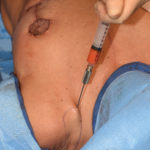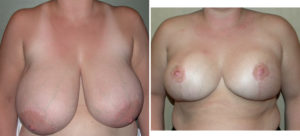Breast reduction is a combination reconstructive and aesthetic body contouring procedure. It relieves the musculoskeletal symptoms from large hanging breasts as well as lifts and reshapes it higher up on the chest wall. While it does so a the expense of anchor-pattern scars of some length, it is a tremendously effective operation for the large breasted woman.
One of the classic physical signs of breasts that are too heavy for one’s body frame is the presence of shoulder grooves. These occur from the compression of the bra straps on the skin from the weight of the breasts in a bra. Shoulder grooves occur partially from fat atrophy from the constant compression of the bra straps compressing it down on the muscle. They can occur as quite striking and deep on some patients, particularly those with very large breasts.
An interesting question is whether shoulder grooves resolve/go away after a breast reduction. In theory they should go away as the weight of the breasts is relieved on the supporting bra straps. There are, however, no studies which have ever evaluated the resolution of these after breast reduction surgery. Since their presence partly occurs from fat atrophy one could presume that they will persist even after a successful reduction and lift of the breasts.


Dr. Barry Eppley
Indianapolis, Indiana


